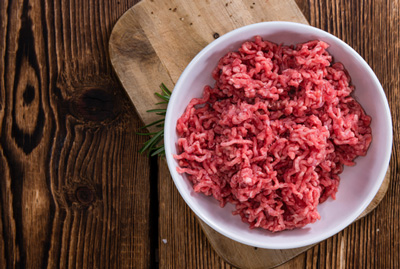Bacteriophages reduce salmonella in meat products by 90%
- Like
- Digg
- Del
- Tumblr
- VKontakte
- Buffer
- Love This
- Odnoklassniki
- Meneame
- Blogger
- Amazon
- Yahoo Mail
- Gmail
- AOL
- Newsvine
- HackerNews
- Evernote
- MySpace
- Mail.ru
- Viadeo
- Line
- Comments
- Yummly
- SMS
- Viber
- Telegram
- Subscribe
- Skype
- Facebook Messenger
- Kakao
- LiveJournal
- Yammer
- Edgar
- Fintel
- Mix
- Instapaper
- Copy Link
Posted: 24 June 2016 | Victoria White, Digital Content Producer | 1 comment
Researchers are using an old technology that uses natural bacteria predators, called bacteriophages to reduce salmonella bacteria in meat products…


Researchers are using an old technology that uses natural bacteria predators, called bacteriophages to reduce salmonella bacteria in meat products.


Salmonella is one of the most common causes of food borne illnesses. The bacteria can cause diarrhoea, fever, vomiting and abdominal cramps. In people with weaker immune systems, or in young children and the elderly, it can be fatal.
The researchers treated ground meat products infected with four types of salmonella by applying Myoviridae bacteriophages during mixing. Bacteriophages are commonly found in our environment. They are viruses that can only harm specific bacterial cells and are harmless to humans, animals and plants.
Salmonella reduced by 90 percent
In the experiments, the salmonella bacteria were inoculated on refrigerated meat and poultry trim, then the treatment was applied to the meat before grinding. The bacteriophages invaded the cells of the bacteria and destroyed them.
“We were able to reduce salmonella by as much as 90 percent in ground poultry, ground pork and ground beef,” Assistant Professor Amilton de Mello of the University of Nevada reported. “We’re excited to be able to show such good results, food safety is an important part of our work and salmonella is one of the most prevalent bacteria in the nation’s food supply.”
De Mello’s research focuses on positively impacting meat industry operations, production costs, meat quality attributes and animal welfare. His broad research programme approaches important “from farm-to-table” steps such as animal welfare, meat quality and food safety. His current research is related to pre-slaughter physical conditions, value-added products, pre- and post-harvest food safety interventions, effects of physiologic parameters on muscle-to-meat transformation, beef nutritional values and control of salmonella and E. coli during processing.










If you heat your minced meat in an appropiate way all salmonella’s will be inactivated, including other vegetative bacterial pathogens and foodborne viruses.
what is the price per kg minced meat to eradicate 90% of the salmonella’s
is the inactivating of salmonella’s lineair, also with low concentrations salmonella’s?
what was the concentration salmonella’s used in the experiment?